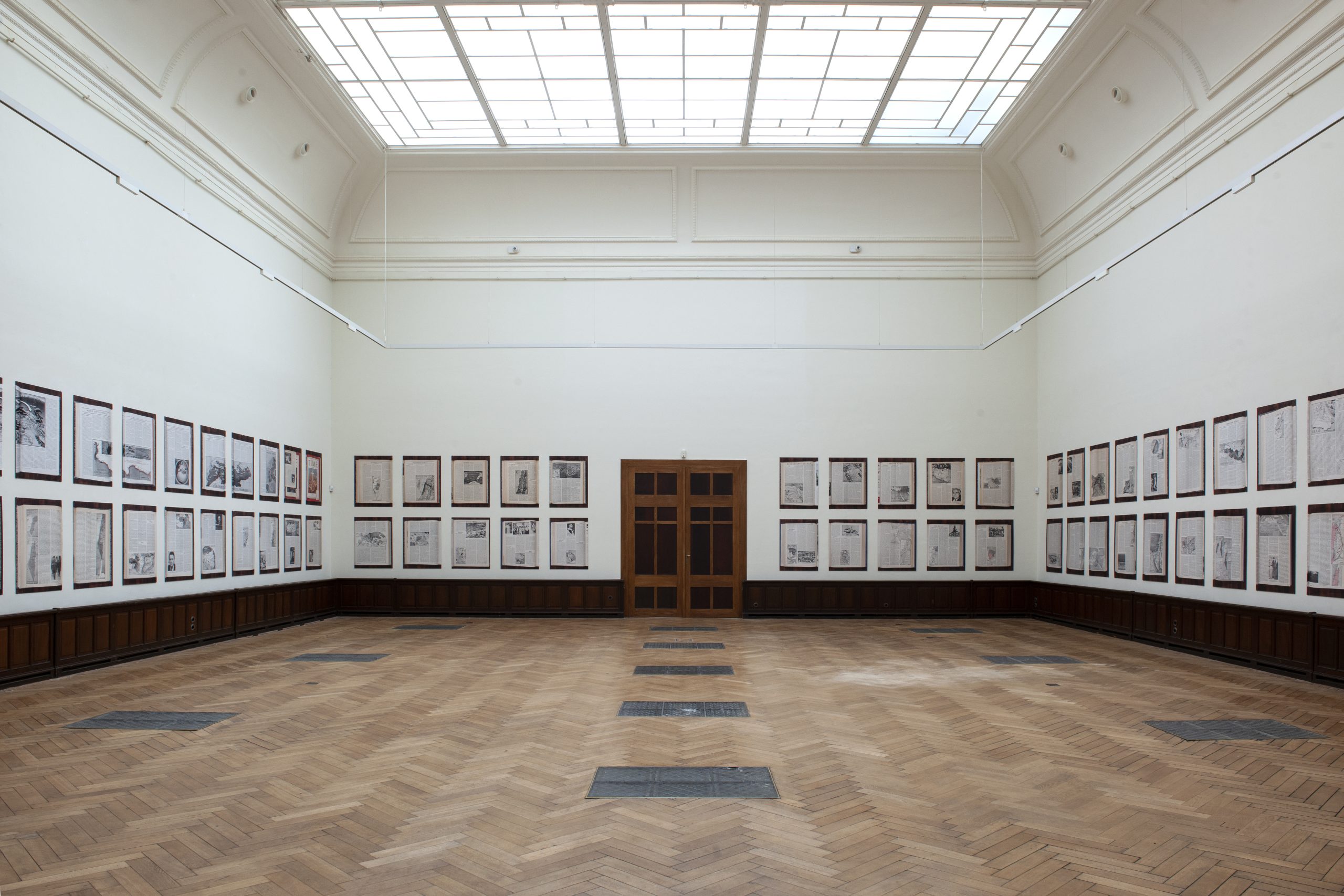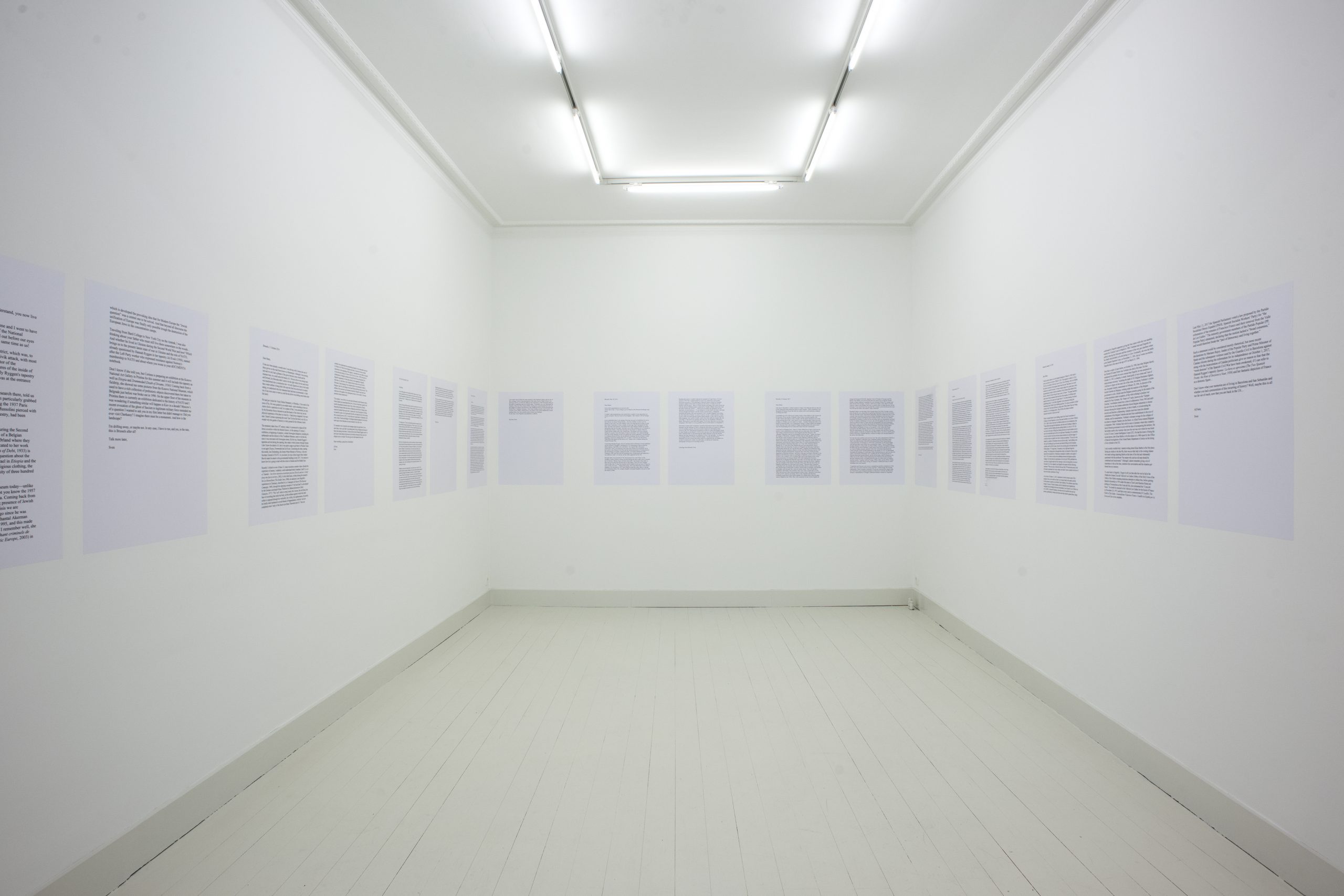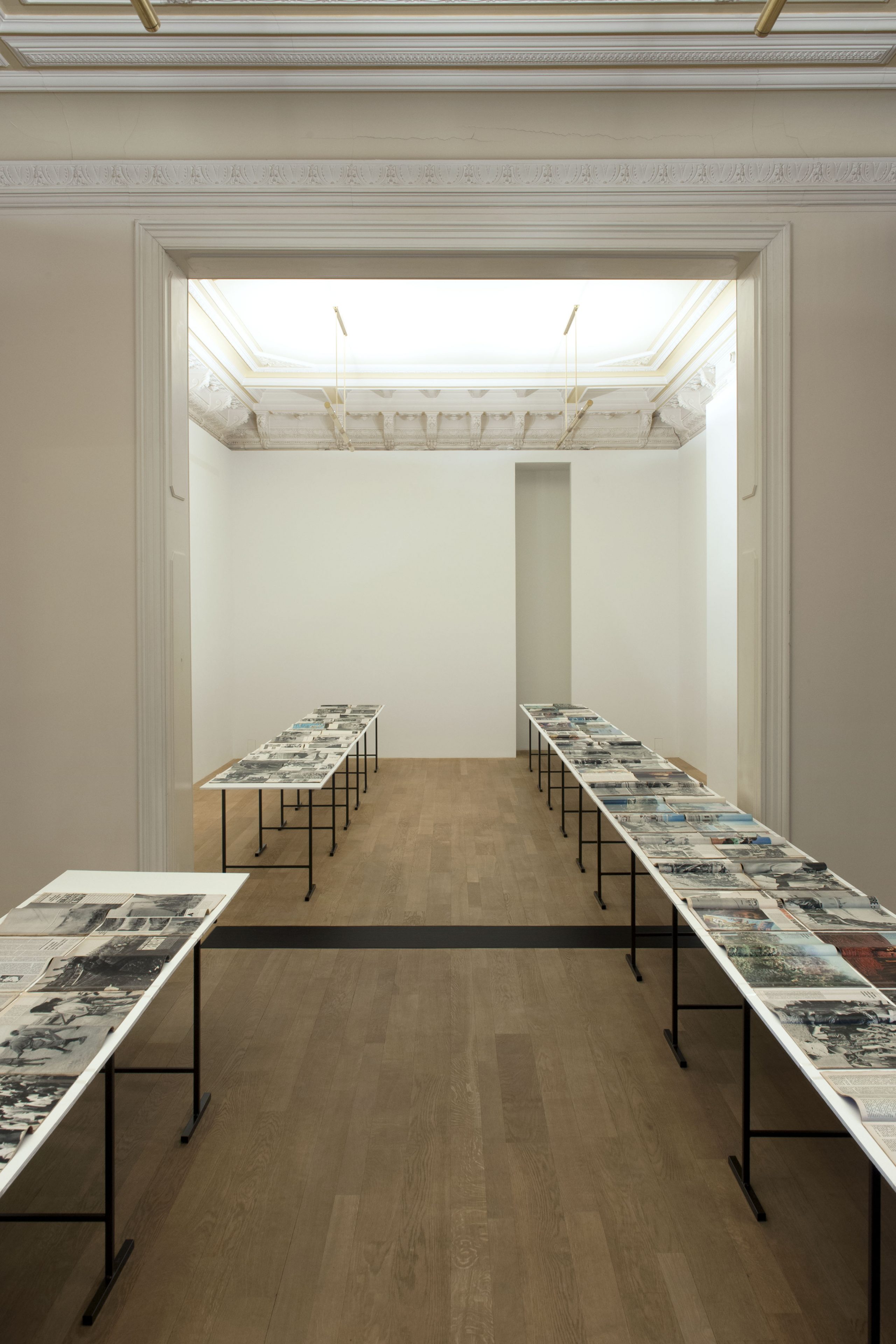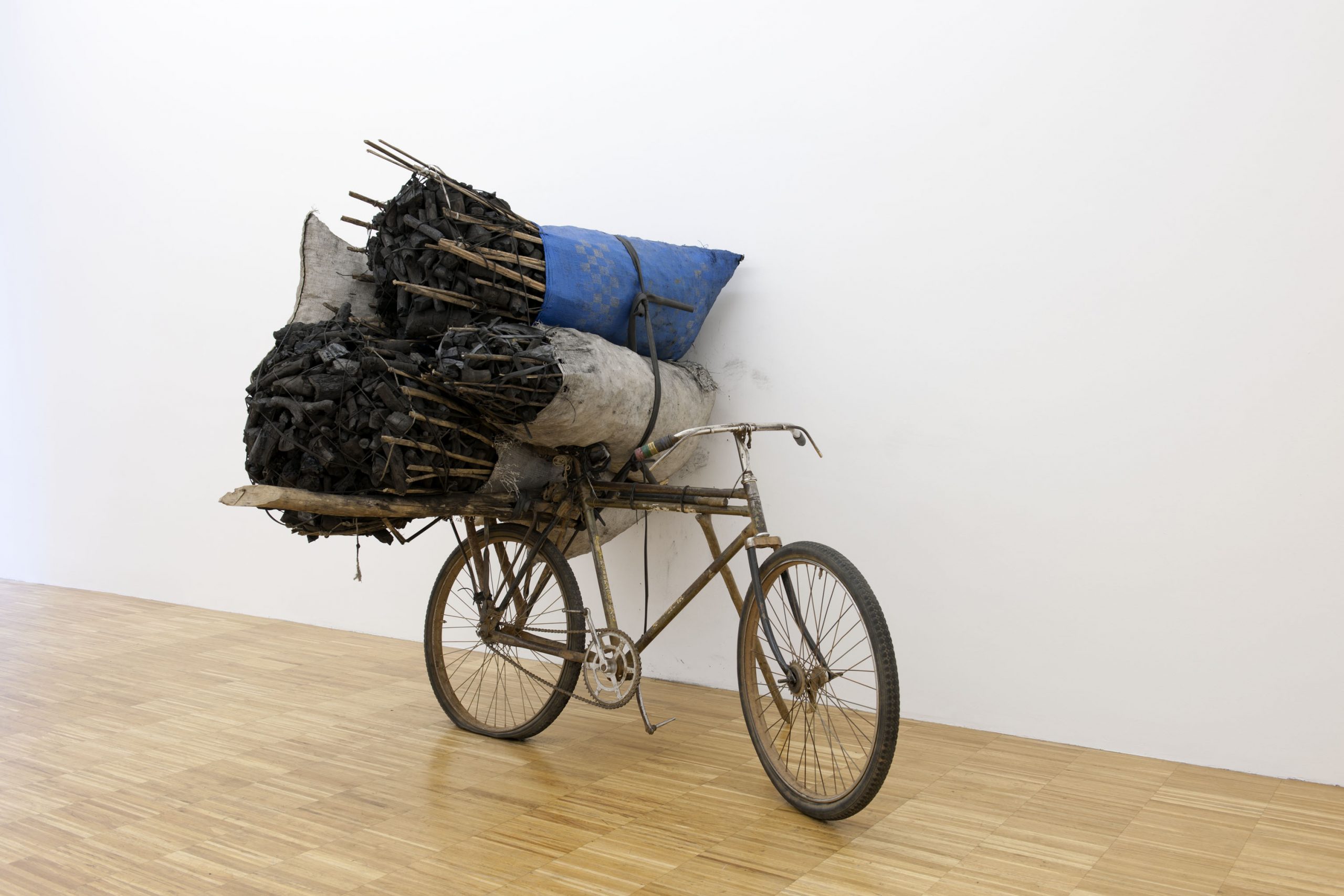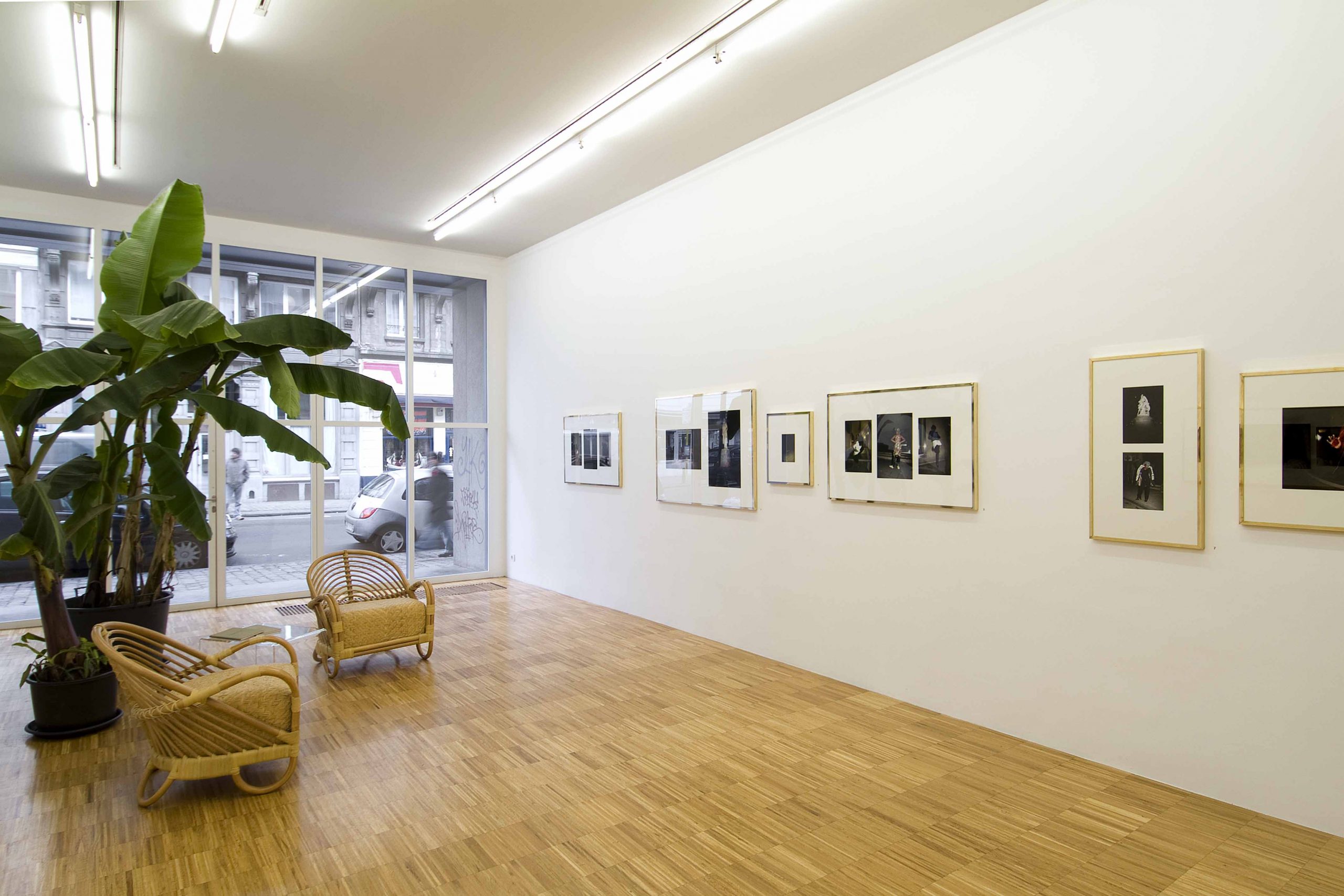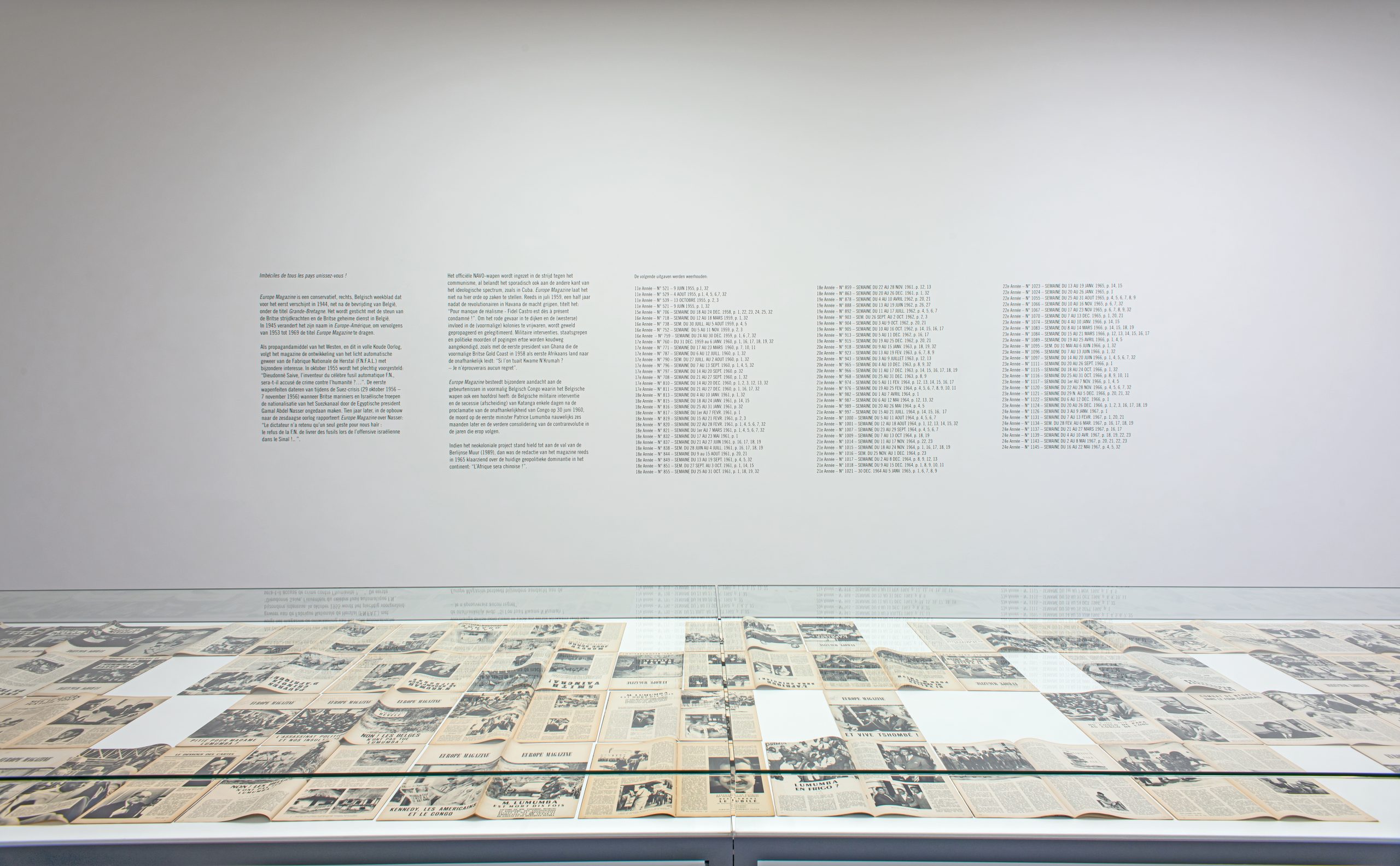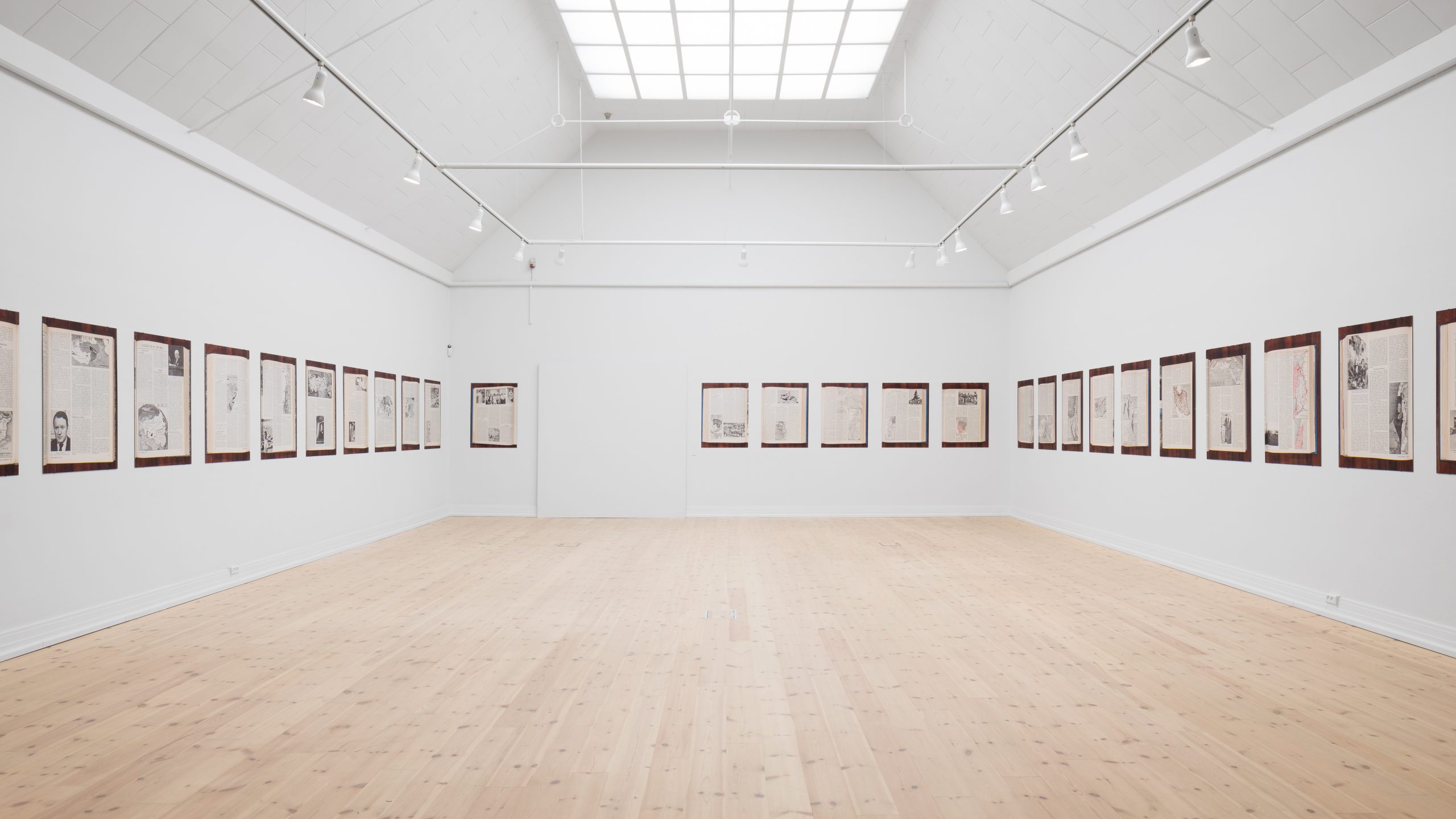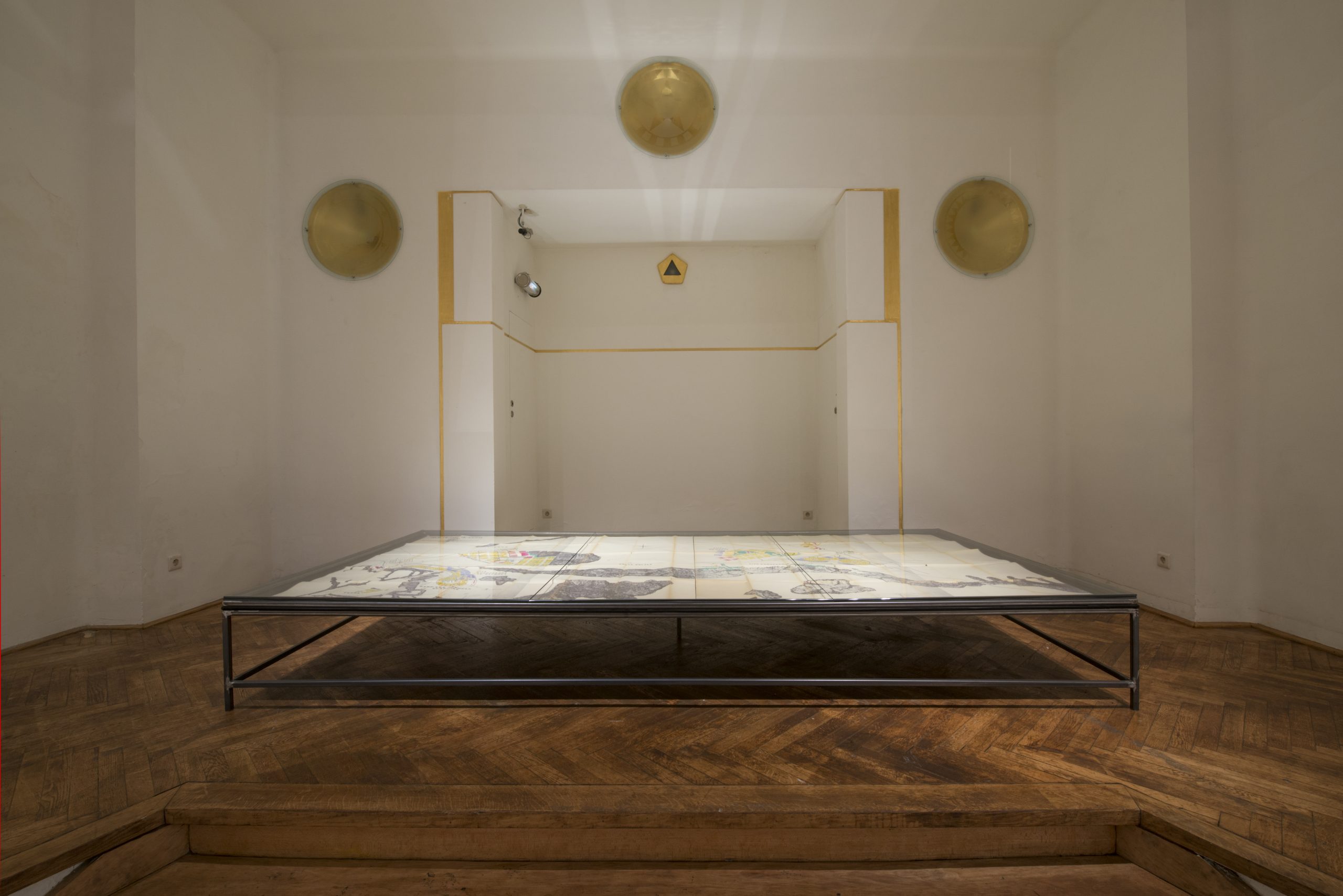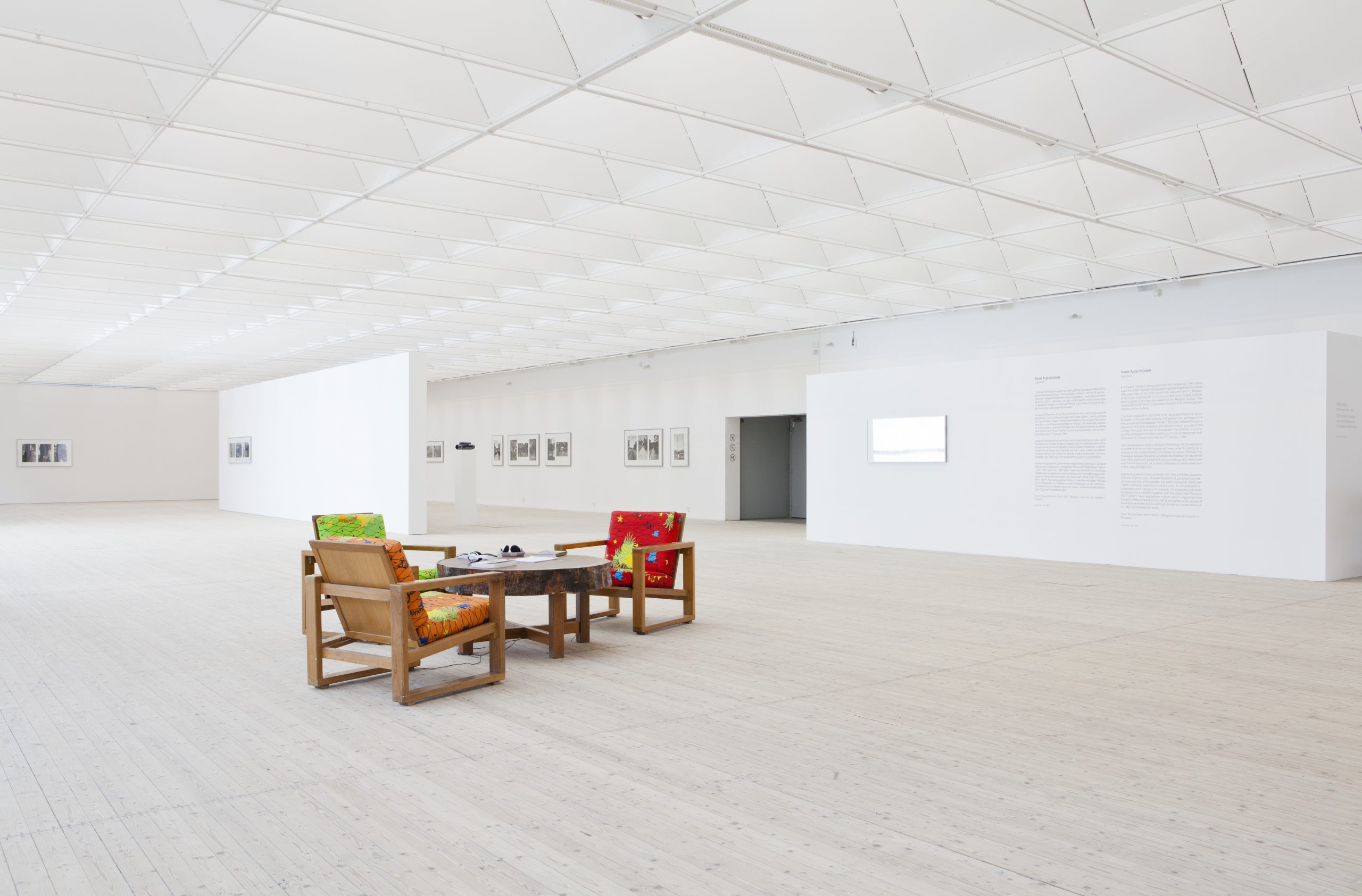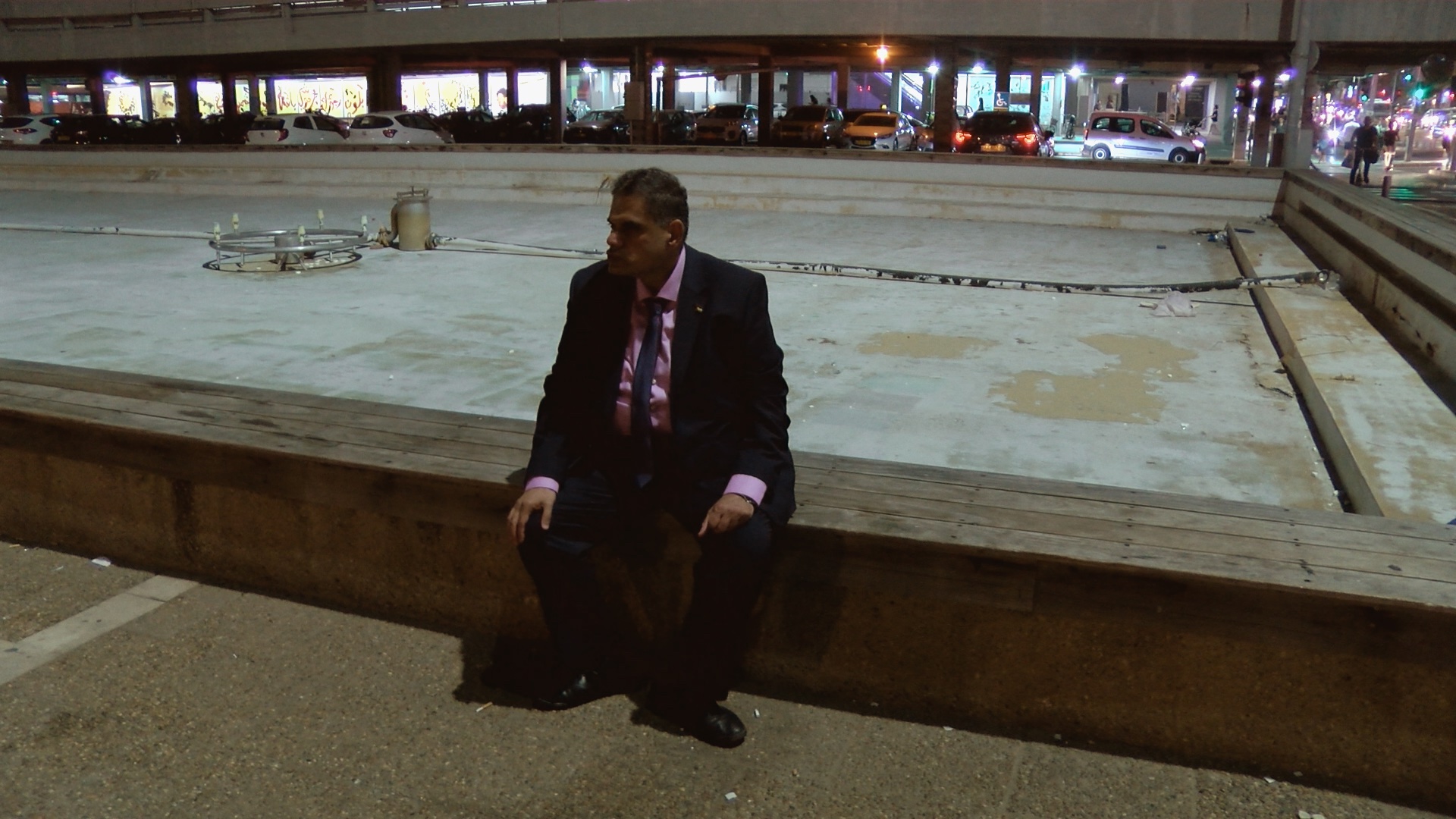Sven Augustijnen
Exhibitions at Jan Mot
17/01/13
Sven Augustijnen
Spectres
Film Screening
at RITS cinema, Brussels
Eija-Liisa Ahtila, Sven Augustijnen, Richard Billingham, Pierre Bismuth, Manon de Boer, Rineke Dijkstra, Honoré ∂'O, Dora García, Dominique Gonzalez-Foerster, Douglas Gordon, Joachim Koester, Sharon Lockhart, Deimantas Narkevičius, Uri Tzaig, Ian Wilson
New Space Opening Show
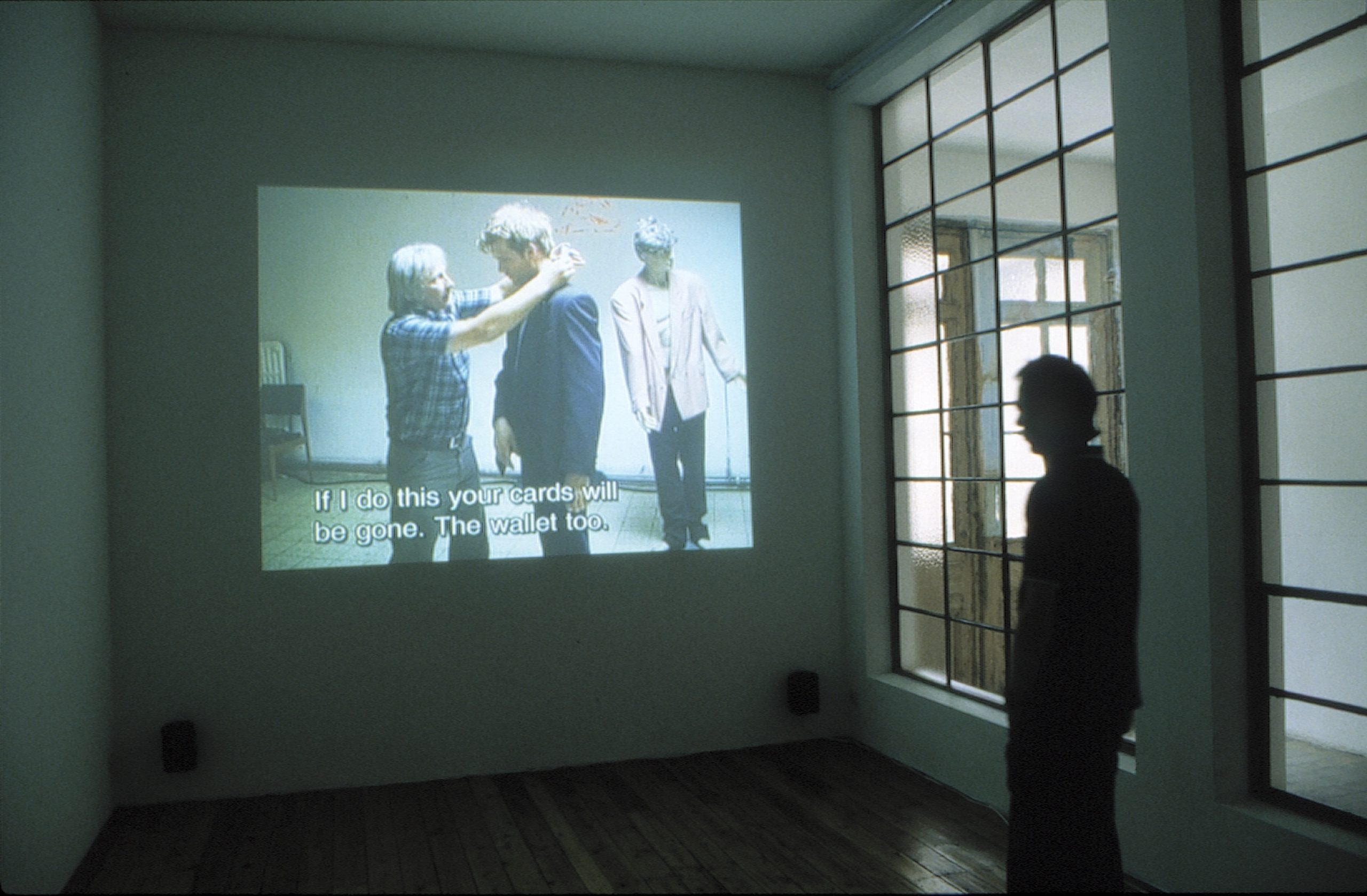
Sven Augustijnen
L'école des pickpockets
Other exhibitions
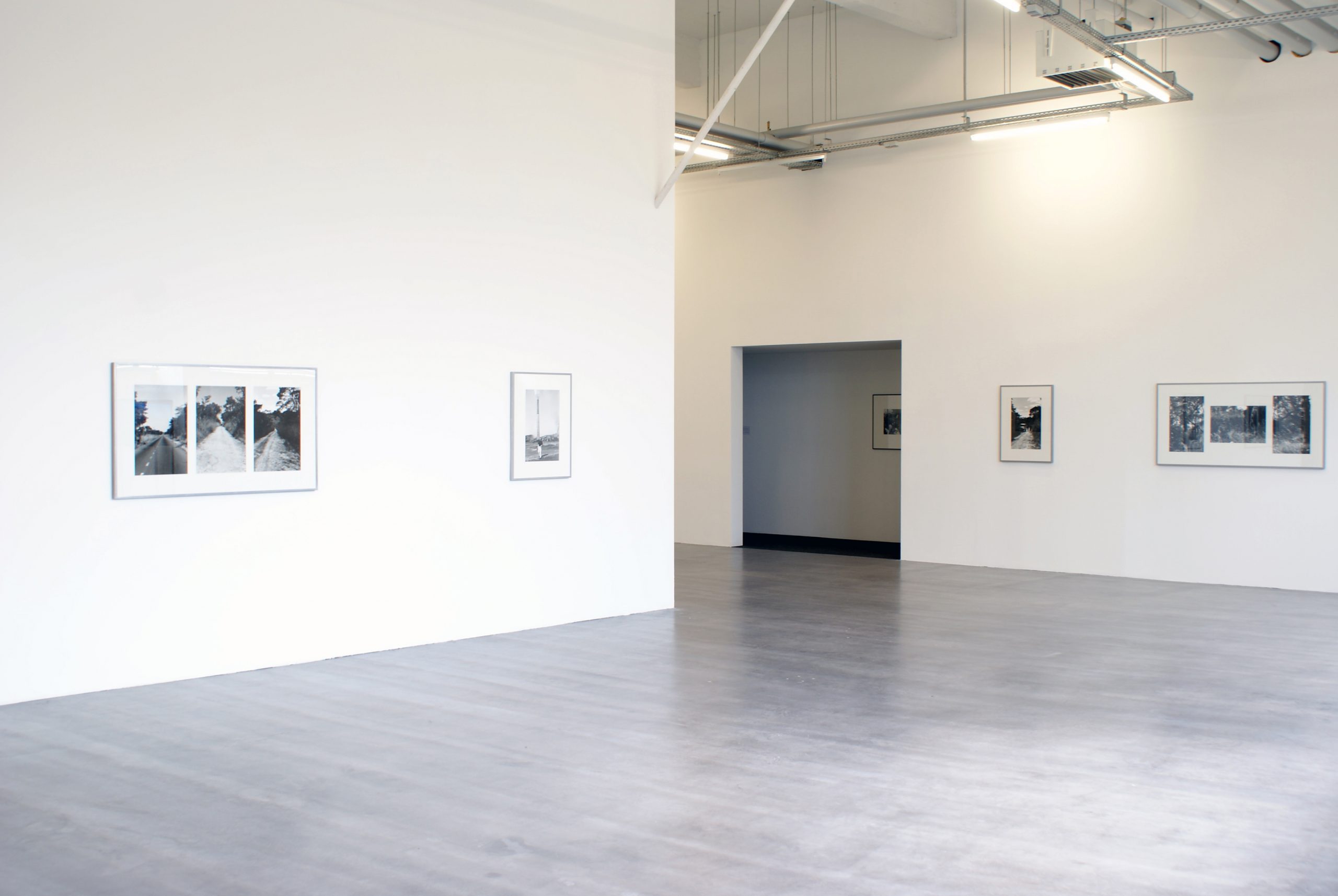
Sven Augustijnen
Spectres
Wiels, Brussels
Works
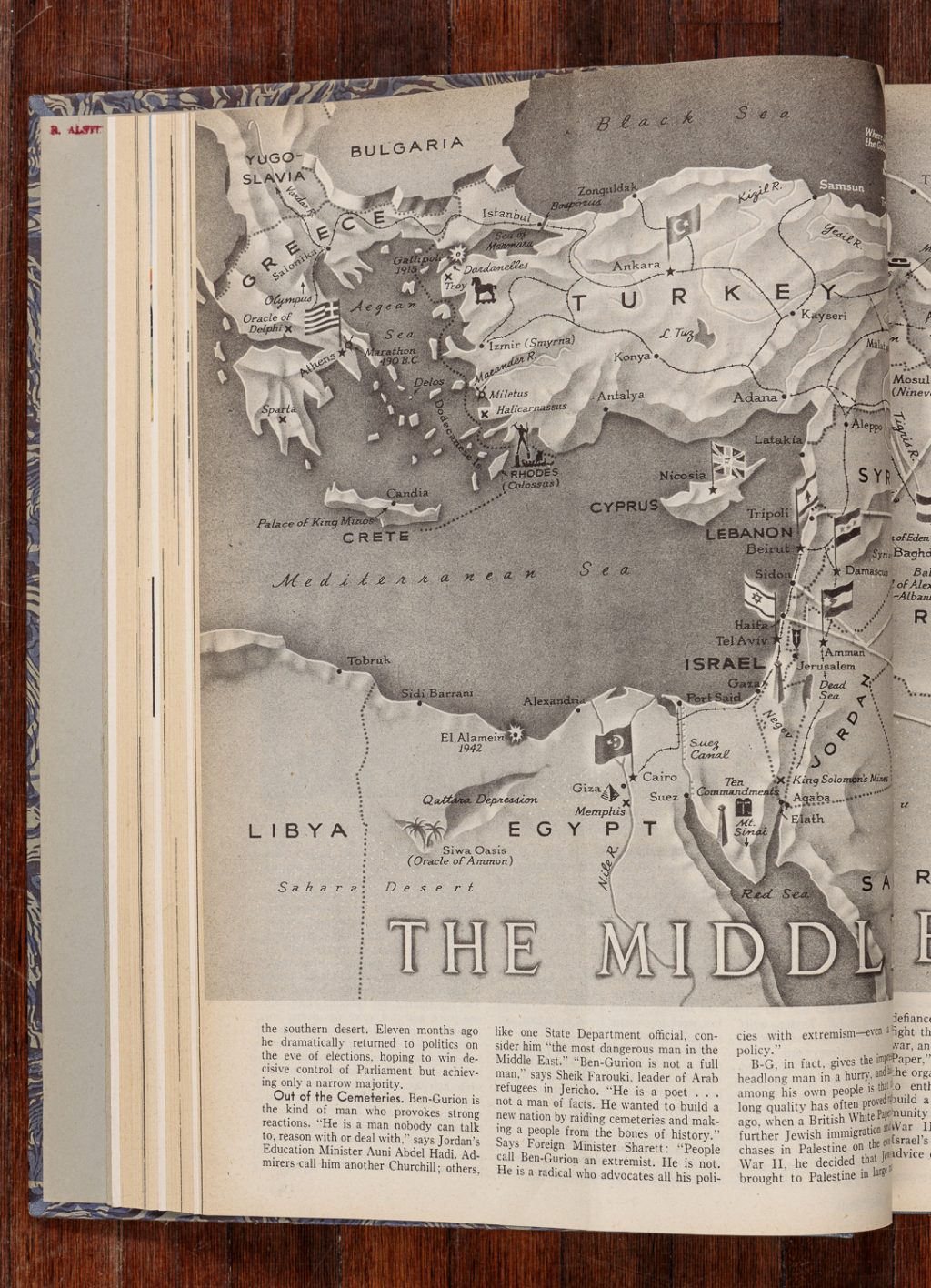
Sven Augustijnen
Maps of the Middle East (1942 – 1969), 2020
Time Magazine
edition of 1 and 1 A.P.

Sven Augustijnen
Maps of the Middle East (1942 – 1969), 2020
Time Magazine
edition of 1 and 1 A.P.
Time Magazine has been published weekly since 1923. The magazine is known for its red frame on its front pages and journalistic style, which is personal and narrative. Based on the maps in Time Magazine, Augustijnen points out that, in many ways, journalism has become a modern form of historical writing. Historical writing that cannot only be read as facts but also should be perceived as personal narratives and political attitudes. Cartography, or drawing a map, is an attempt to map out and measure the world based on logical reasoning. As new technology is developed and political decisions change national borders, older maps are replaced by new, overwritten like palimpsests.
Sven Augustijnen
Spectres, 2011
HD video, colour, sound
103 minutes
edition of 3 and 1 A.P.
Scenario and realisation: Sven Augustijnen
Format: HDV
Duration: 90 minutes
Producers: Auguste Orts, Projections, Jan Mot and Cobra Films
Coproducers: Kunstenfestivaldesarts, KVS, Wiels, de Appel, MuZee
With backing from: CERA Foundation, FRAC Bourgogne, Kunsthalle Bern, K9000, Vlaamse Gemeenschapscommissie, Flanders Audiovisual Fund, kc Buda
Spectres is an auteur documentary in the cinéma verité style, involving a multitude of colourful characters who, 100 years after the death of Leopold II and 50 years after the independence of the Congo, are still haunted by the ghosts of Belgium’s colonial past. Oddly enough, we have come to the conclusion that the same antagonistic forces that shaped the past are still in operation today. In the film we see that a royalist, capitalist, neo-colonial front and an anti-colonial, Marxist front are shaping up in opposition to one another. We fly over Katanga with a royalist who was involved in the preparations for independence in 1960 and who since then has been trying to substantiate the notion that no guilt can be attributed to the Belgians for the murder of Patrice Lumumba. We follow him in his stubborn quest in the savannah to the tree against which Lumumba and his companions were executed. After the execution, a Belgian police officer dissolved Lumumba’s body in a bath of acid. Only the teeth were left, and years later he threw them into the North Sea. We then go to Ostend to witness a tribute to Lumumba, who it was reckoned a communist, organised by a collective of anti-colonialists and a Congolese brass band. They also walk on to the bronze statue of Leopold II, where the hand of a Congolese man had been sawn off, to denounce the misconduct of Leopold II’s regime. At a conference in Brussels, several historians try in their turn to negate Anglo-Saxon accusations directed at Leopold II regarding a forgotten holocaust. A strange old man in the audience speaks. He makes use of the writings of Karl Marx to justify colonialism as a natural evolution from feudalism to a revolutionary society. These are just a few of the storylines that make Spectres an intriguing, compelling and sometimes surrealist journey. Former colonials, royalists, psychiatrists, communists, religious believers, historians and anti-colonialists: at commemorations, conferences and demonstrations they all try to allay the ghosts of the past. This reveals that the line between legitimisation and writing history is remarkably thin. Presented with a certain sense of provocative humour, and embellished by extracts from Bach’s St John’s Passion and Missa Luba by Les Troubadours du Roi Baudouin, Spectres is an emotional filmic experience that probes the darker regions of the colonial memory.

View of the exhibition Spectres by Sven Augustijnen, VOX, centre de l’image contemporaine, Montreal, from May 11 to July 13, 2013. Photo: Michel Brunelle
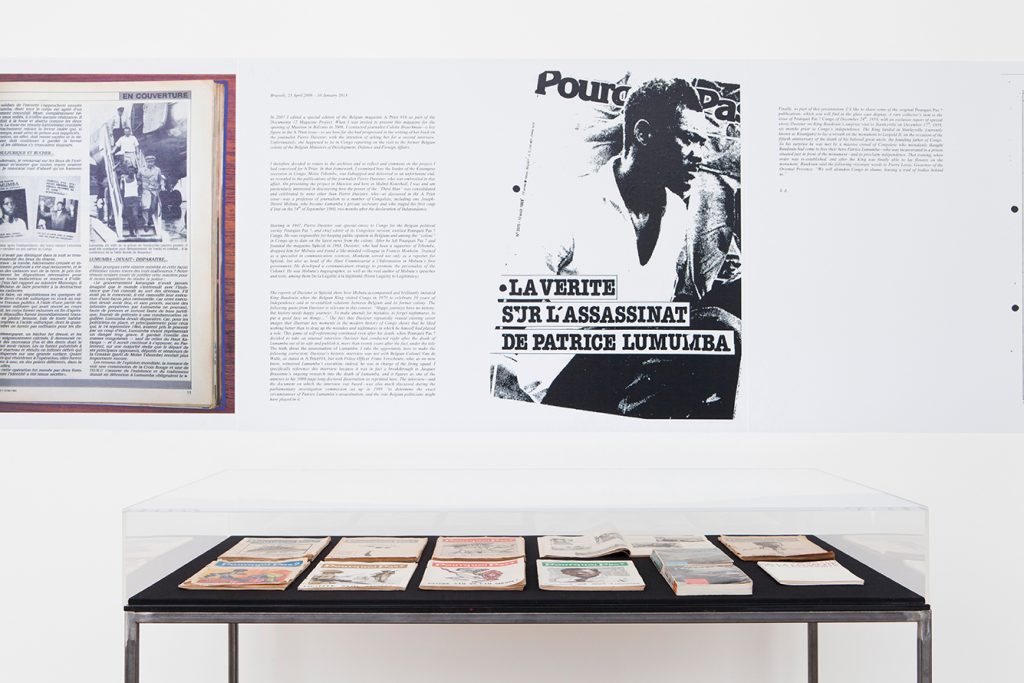
Sven Augustijnen, Spectres, installation view at Konsthall Malmö, 2013

Sven Augustijnen, Spectres, installation view at Konsthall Malmö, 2013
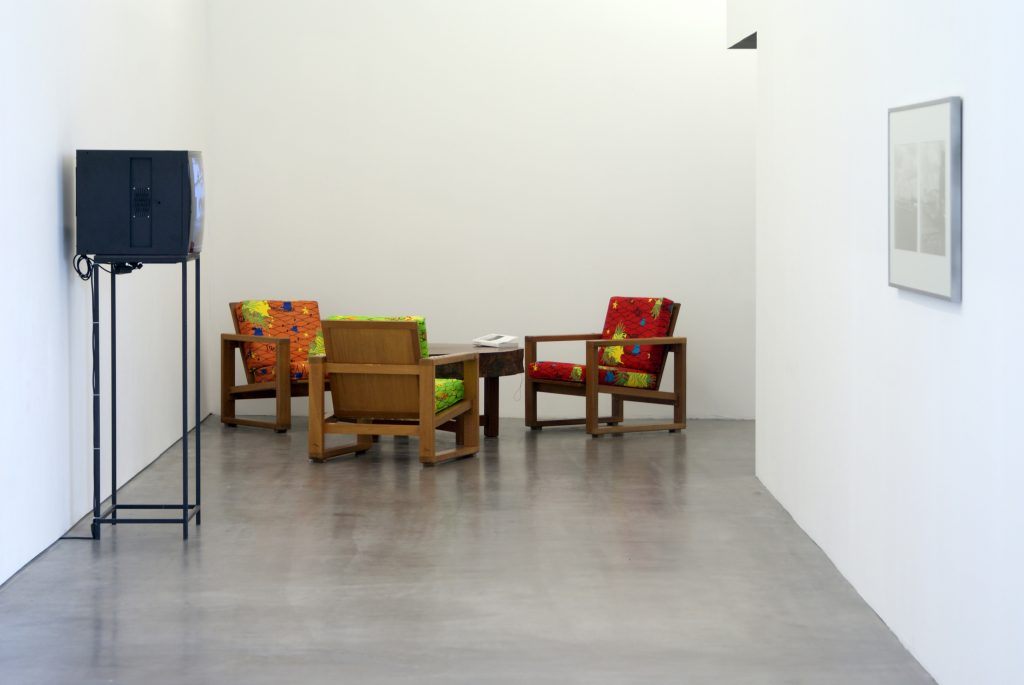
Sven Augustijnen, Spectres, installation view at Wiels, 2011
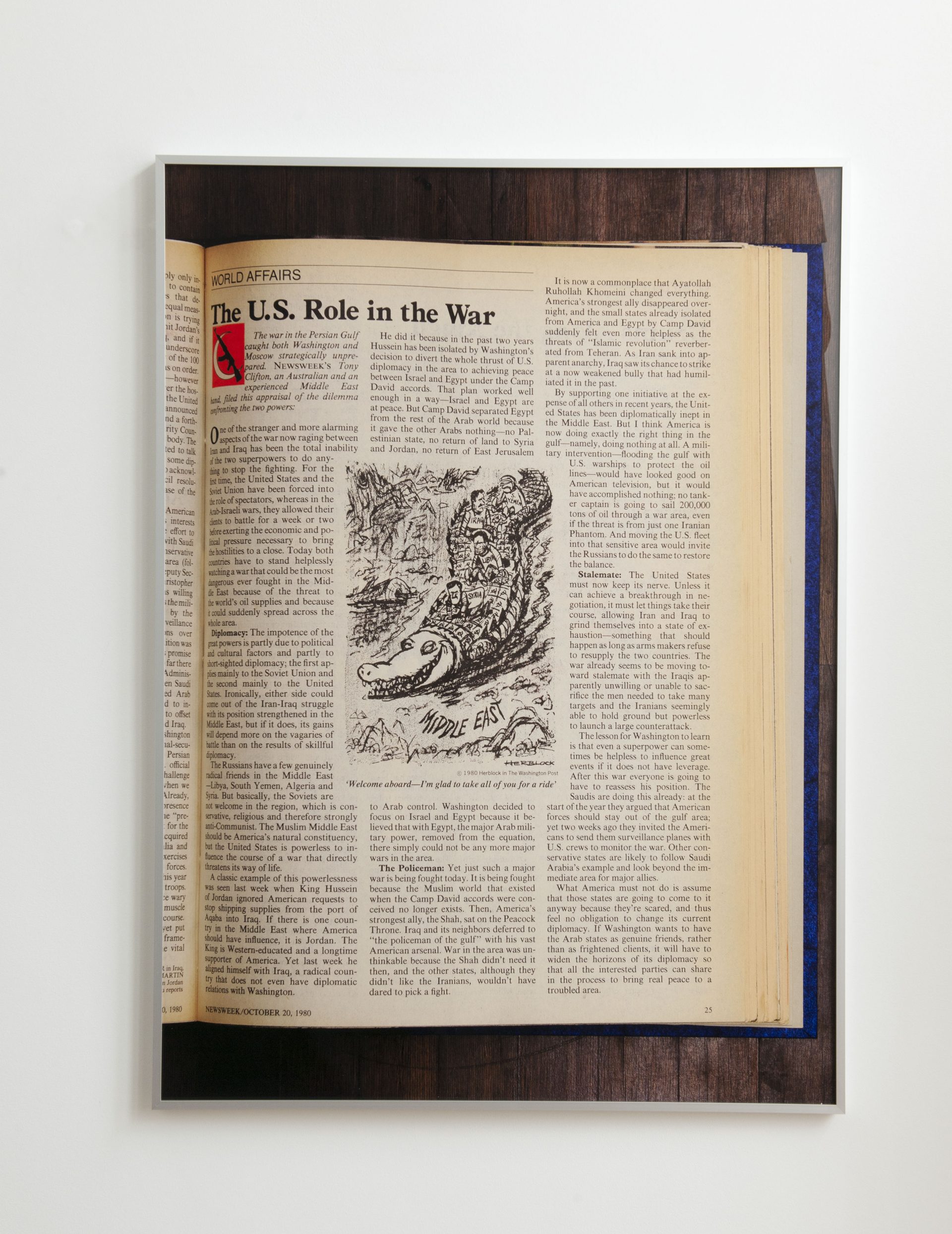
Sven Augustijnen
Untitled (Crocodile), 2016
inkjet print, framed
115,7 x 83,7 cm (image), 118 x 85 x 2,5 cm (frame)
edition of 5 and 2 A.P.
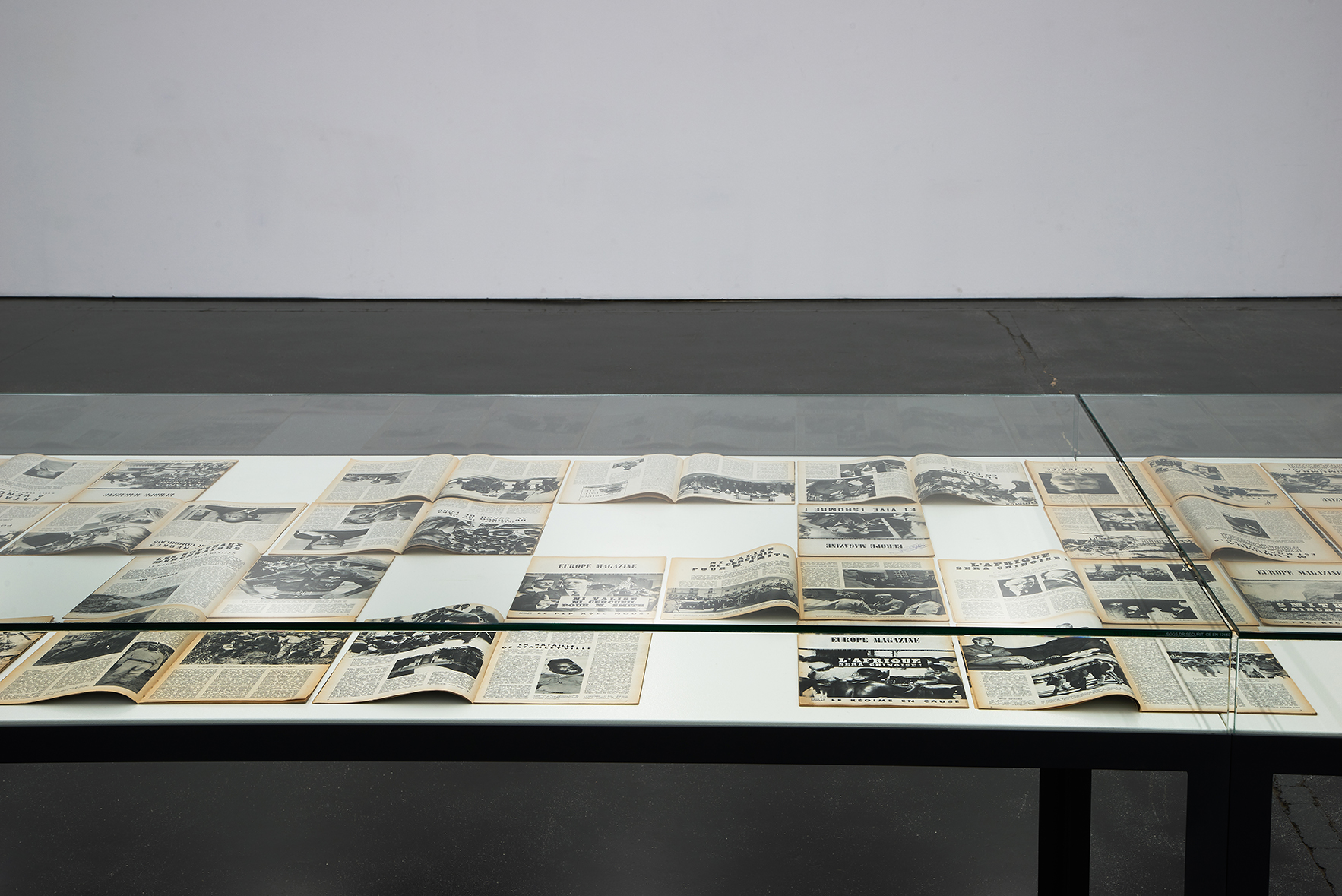
Sven Augustijnen
Imbéciles de tous les pays unissez-vous, 2018
160 copies of magazine “Europe”, vitrine, wall text
unique
Europe Magazine is a conservative, right-wing Belgian magazine that is first published in 1944, just after the liberation of Belgium, under the title Grande-Bretagne. It is founded with help of the British secret service and the British forces in Belgium. In 1945 it changes its name to Europe-Amérique, and from 1953 to 1969 it is published as Europe Magazine.
As a propaganda tool of the West, in the middle of the Cold War, the magazine takes a keen interest in the development of the FAL, a light automatic rifle produced by the Fabrique Nationale de Herstal (FN). In October 1955, the rifle is officially presented: ‘Will Dieudonné Saive, the inventor of this famous automatic rifle, be accused of crimes against humanity?’
The first feat of arms of the FAL date from the Suez Crisis (26 October 1956 – 7 November 1956), when British paratroopers and Israeli soldiers invaded Egypt to regain control of the Suez Canal, which had been nationalized by the Egyptian president Gamal Abdel Nasser. Ten years later, in the run-up to the Six-Day War, Europe Magazine reports on Nasser: ‘The dictator has remembered one thing that suffices to hate us: the refusal of FN to sell him rifles when the Israelis invaded the Sinai Peninsula!’
The official NATO weapon is also used in the fight against communism, though sporadically it ends up at the other side of the ideological spectrum, for example in Cuba. Europe Magazine doesn’t hesitate to set things right. In July 1959, only six months after the revolutionary takeover of the government in Havana, it headlines: ‘For lack of realism—Fidel Castro is hereby sentenced!’ To contain the red menace and safeguard Western interests in the (former) colonies, the magazine propagates and legitimizes violence. Military interventions, coups and (attempted) political assassinations are cold-bloodedly announced, like for example in the case of Ghana’s first president, who led the former British colony Gold Coast to independence in 1958: ‘What if we killed Kwame N’Krumah?—I really wouldn’t have any regrets.’
Europe Magazine devotes special attention to events in the former Belgian colony of Congo, where once more the Belgian FAL plays a leading part: there’s the Belgian military intervention and the secession of the Katanga province only a few days after the declaration of the independence of Congo on 30 June 1960, the assassination of the first prime minister Patrice Lumumba only six months later and the further consolidation of the counterrevolution in the years that follow.
The neocolonial project may have continued till the fall of the Berlin Wall in 1989, but already in 1965 the editorial staff of Europe Magazine had a clear view of what the future would look like and who would dominate the continent from a geopolitical perspective: ‘Africa will be Chinese!’
11e Année – N° 521 – 9 JUIN 1955, p.1, 32
11e Année – N° 529 – 4 AOUT 1955, p.1, 4, 5, 6,7, 32
11e Année – N° 539 – 13 OCTOBRE 1955, p. 2, 3
11e Année – N° 521 – 9 JUIN 1955, p. 1, 32
15e Année – N° 706 – SEM. DU 18 AU 24 DEC. 1958, p. 1, 22, 23, 24, 25, 32
16e Année – N° 718 – SEM. DU 12 AU 18 MARS 1959, p. 1, 32
16e Année – N° 738 – SEM. DU 30 JUILL. AU 5 AOUT 1959, p. 4, 5
16e Année – N° 752 – SEM. DU 5 AU 11 NOV. 1959, p. 2, 3
16e Année – N° 759 – SEM. DU 24 AU 30 DEC. 1959, p. 1, 6 ,7, 32
17e Année – N° 760 – DU 31 DEC. 1959 au 6 JANV. 1960, p. 1, 16, 17, 18, 19, 32
17e Année – N° 771 – SEM. DU 17 AU 23 MARS 1960, p. 7, 10, 11
17e Année – N° 787 – SEM. DU 6 AU 12 JUILL. 1960, p. 1, 32
17e Année – N° 790 – SEM. DU 27 JUILL. AU 2 AOUT 1960, p. 1, 32
17e Année – N° 796 – SEM. DU 7 AU 13 SEPT. 1960, p. 1, 4, 5, 32
17e Année – N° 797 – SEM. DU 14 AU 20 SEPT. 1960, p. 32
17e Année – N° 708 – SEM. DU 21 AU 27 SEPT. 1960, p. 1, 32
17e Année – N° 810 – SEM. DU 14 AU 20 DEC. 1960, p. 1, 2, 3, 12, 13, 32
17e Année – N° 811 – SEM. DU 21 AU 27 DEC. 1960, p. 1, 16, 17, 32
18e Année – N° 813 – SEM. DU 4 AU 10 JANV. 1961, p. 1, 32
18e Année – N° 815 – SEM. DU 18 AU 24 JANV. 1961, p. 14, 15
18e Année – N° 816 – SEM. DU 25 AU 31 JANV. 1961, p. 32
18e Année – N° 817 – SEM. DU 1er AU 7 FEVR. 1961, p. 1
18e Année – N° 819 – SEM. DU 15 AU 21 FEVR. 1961, p. 2, 3
18e Année – N° 820 – SEM. DU 22 AU 28 FEVR. 1961, p. 1, 4, 5, 6, 7, 32
18e Année – N° 821 – SEM. DU 1er AU 7 MARS 1961, p. 1, 4, 5, 6, 7, 32
18e Année – N° 832 – SEM. DU 17 AU 23 MAI 1961, p. 1
18e Année – N° 837 – SEM. DU 21 AU 27 JUIN 1961, p. 16, 17, 18, 19
18e Année – N° 838 – SEM. DU 28 JUIN AU 4 JUILL. 1961, p. 16, 17, 18, 19
18e Année – N° 844 – SEM. DU 9 au 15 AOUT 1961, p. 20, 21
18e Année – N° 849 – SEM. DU 13 AU 19 SEPT. 1961, p. 4, 5, 32
18e Année – N° 851 – SEM. DU 27 SEPT. AU 3 OCT. 1961, p. 1, 14, 15
18e Année – N° 855 – SEM. DU 25 AU 31 OCT. 1961, p. 1, 18, 19, 32
18e Année – N° 859 – SEM. DU 22 AU 28 NOV. 1961, p. 12, 13
18e Année – N° 863 – SEM. DU 20 AU 26 DEC. 1961, p. 1, 32
19e Année – N° 878 – SEM. DU 4 AU 10 AVRIL 1962, p. 20, 21
19e Année – N° 888 – SEM. DU 13 AU 19 JUIN 1962, p. 26, 27
19e Année – N° 892 – SEM. DU 11 AU 17 JUILL. 1962, p. 4, 5, 6, 7
19e Année – N° 903 – SEM. DU 26 SEPT. AU 2 OCT. 1962, p. 2, 3
19e Année – N° 904 – SEM. DU 3 AU 9 OCT. 1962, p. 20, 21
19e Année – N° 905 – SEM. DU 10 AU 16 OCT. 1962, p. 14, 15, 16, 17
19e Année – N° 913 – SEM. DU 5 AU 11 DEC. 1962, p. 16, 17
19e Année – N° 915 – SEM. DU 19 AU 25 DEC. 1962, p. 20, 21
20e Année – N° 918 – SEM. DU 9 AU 15 JANV. 1963, p. 18, 19, 32
20e Année – N° 923 – SEM. DU 13 AU 19 FEV. 1963, p. 6, 7, 8, 9
20e Année – N° 943 – SEM. DU 3 AU 9 JUILLET 1963, p. 12, 13
20e Année – N° 965 – SEM. DU 4 AU 10 DEC. 1963, p. 8, 9, 32
20e Année – N° 966 – SEM. DU 11 AU 17 DEC. 1963, p. 14, 15, 16, 17, 18, 19
20e Année – N° 968 – SEM. DU 25 AU 31 DEC. 1963, p. 8, 9
21e Année – N° 974 – SEM. DU 5 AU 11 FEV. 1964, p. 12, 13, 14, 15, 16, 17
21e Année – N° 976 – SEM. DU 19 AU 25 FEV. 1964, p. 4, 5, 6, 7, 8, 9, 10, 11
21e Année – N° 982 – SEM. DU 1 AU 7 AVRIL 1964, p. 1
21e Année – N° 987 – SEM. DU 6 AU 12 MAI 1964, p. 12, 13, 32
21e Année – N° 989 – SEM. DU 20 AU 26 MAI 1964, p. 4, 5
21e Année – N° 997 – SEM. DU 15 AU 21 JUILL. 1964, p. 14, 15, 16, 17
21e Année – N° 1000 – SEM. DU 5 AU 11 AOUT 1964, p. 4, 5, 6, 7
21e Année – N° 1001 – SEM. DU 12 AU 18 AOUT 1964, p. 1, 12, 13, 14, 15, 32
21e Année – N° 1007 – SEM. DU 23 AU 29 SEPT. 1964, p. 4, 5, 6, 7
21e Année – N° 1009 – SEM. DU 7 AU 13 OCT 1964, p. 18, 19
21e Année – N° 1014 – SEM. DU 11 AU 17 NOV. 1964, p. 22, 23
21e Année – N° 1015 – SEM. DU 18 AU 24 NOV. 1964, p. 1, 16, 17, 18, 19
21e Année – N° 1016 – SEM. DU 25 NOV. AU 1 DEC. 1964, p. 23
21e Année – N° 1017 – SEM. DU 2 AU 8 DEC. 1964, p. 8, 9, 12, 13
21e Année – N° 1018 – SEM. DU 9 AU 15 DEC. 1964, p. 1, 8, 9, 10, 11
21e Année – N° 1021 – 30 DEC. 1964 AU 5 JANV. 1965, p. 1, 6, 7, 8, 9
22e Année – N° 1023 – SEM. DU 13 AU 19 JANV. 1965, p. 14, 15
22e Année – N° 1024 – SEM. DU 20 AU 26 JANV. 1965, p. 1
22e Année – N° 1055 – SEM. DU 25 AU 31 AOUT 1965, p. 4, 5, 6, 7, 8, 9
22e Année – N° 1066 – SEM. DU 10 AU 16 NOV. 1965, p. 6, 7, 32
22e Année – N° 1067 – SEM. DU 17 AU 23 NOV 1965, p. 6, 7, 8, 9, 32
22e Année – N° 1070 – SEM. DU 7 AU 13 DEC. 1965, p. 1, 20, 21
23e Année – N° 1074 – SEM. DU 4 AU 10 JANV. 1966, p. 14, 15
23e Année – N° 1083 – SEM. DU 8 AU 14 MARS 1966, p. 14, 15, 18, 19
23e Année – N° 1084 – SEM. DU 15 AU 21 MARS 1966, p. 12, 13, 14, 15, 16, 17
23e Année – N° 1089 – SEM. DU 19 AU 25 AVRIL 1966, p. 1, 4, 5
23e Année – N° 1095 – SEM. DU 31 MAI AU 6 JUIN 1966, p. 1, 32
23e Année – N° 1096 – SEM. DU 7 AU 13 JUIN 1966, p. 1, 32
23e Année – N° 1097 – SEM. DU 14 AU 20 JUIN 1966, p. 1, 4, 5, 6, 7, 32
23e Année – N° 1111 – SEM. DU 20 AU 26 SEPT. 1966, p. 1
23e Année – N° 1115 – SEM. DU 18 AU 24 OCT. 1966, p. 1, 32
23e Année – N° 1116 – SEM. DU 25 AU 31 OCT. 1966, p. 8, 9, 10, 11
23e Année – N° 1117 – SEM. DU 1er AU 7 NOV. 1966, p. 1, 4, 5
23e Année – N° 1120 – SEM. DU 22 AU 28 NOV. 1966, p. 4, 5, 6, 7, 32
23e Année – N° 1121 – SEM. DU 29 N. AU 5 DEC. 1966, p. 20, 21, 32
23e Année – N° 1122 – SEM. DU 6 AU 12 DEC. 1966, p. 1
23e Année – N° 1124 – SEM. DU 20 AU 26 DEC. 1966, p. 1, 2, 3, 16, 17, 18, 19
24e Année – N° 1126 – SEM. DU 3 AU 9 JANV. 1967, p. 1
24e Année – N° 1131 – SEM. DU 7 AU 13 FEVR. 1967, p. 1, 20, 21
24e Année – N° 1134 – SEM. DU 28 FEV. AU 6 MAR. 1967, p. 16, 17, 18, 19
24e Année – N° 1137 – SEM. DU 21 AU 27 MARS 1967, p. 16, 17
24e Année – N° 1139 – SEM. DU 4 AU 10 AVR. 1967, p. 18, 19, 22, 23
24e Année – N° 1143 – SEM. DU 2 AU 8 MAI 1967, p. 20, 21, 22, 23
24e Année – N° 1145 – SEM. DU 16 AU 22 MAI 1967, p. 4, 5, 32
Biography
Sven Augustijnen
Born in 1970 in Mechelen (BE)
Lives and works in Brussels
Co-founder of Auguste Orts
Bibliography
Texts
News

The Brussels-based production and distribution platform Auguste Orts founded by Herman Asselberghs, Sven Augustijnen, Manon de Boer and Anouk De Clercq was appointed to curate the 10th edition of Contour Biennale in Mechelen in fall 2023.
Since 2003, Contour Biennale has grown into a locally and internationally acclaimed exhibition focussed on the moving image. The four artists want to explore how they can unlock the archive and memory of the biennial in order to give it a place amidst new works and thus propagate the importance of the event in and outside Mechelen.
